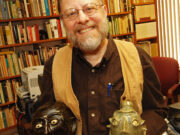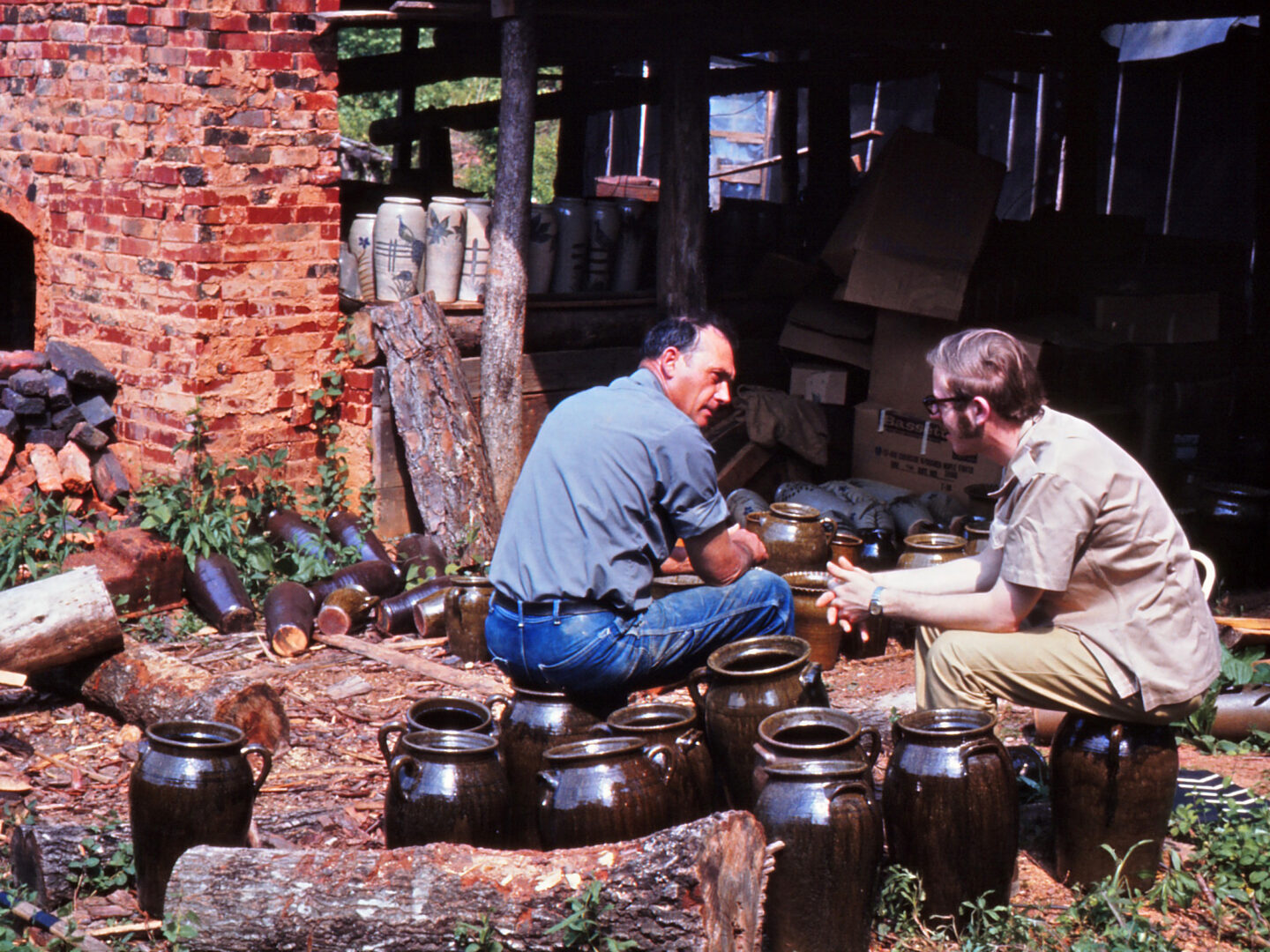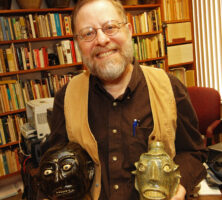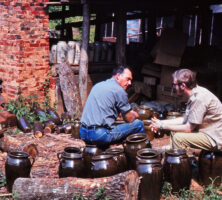The folklorist John A. Burrison is Regents’ Professor of English and director of the folklore curriculum at Georgia State University in Atlanta. His publications include From Mud to Jug: The Folk Potters and Pottery of Northeast Georgia (2010); Roots of a Region: Southern Folk Culture (2007); Storytellers: Folktales and Legends from the South (1989); and Brothers in Clay: The Story of Georgia Folk Pottery (1983), the definitive work on the subject.
In addition to teaching and publishing, Burrison is the curator of Shaping Traditions: Folk Arts in a Changing South, a permanent exhibition in the Goizueta Folklife Gallery of the Atlanta History Museum. He also curates the Folk Pottery Museum of Northeast Georgia in Sautee Nacoochee.
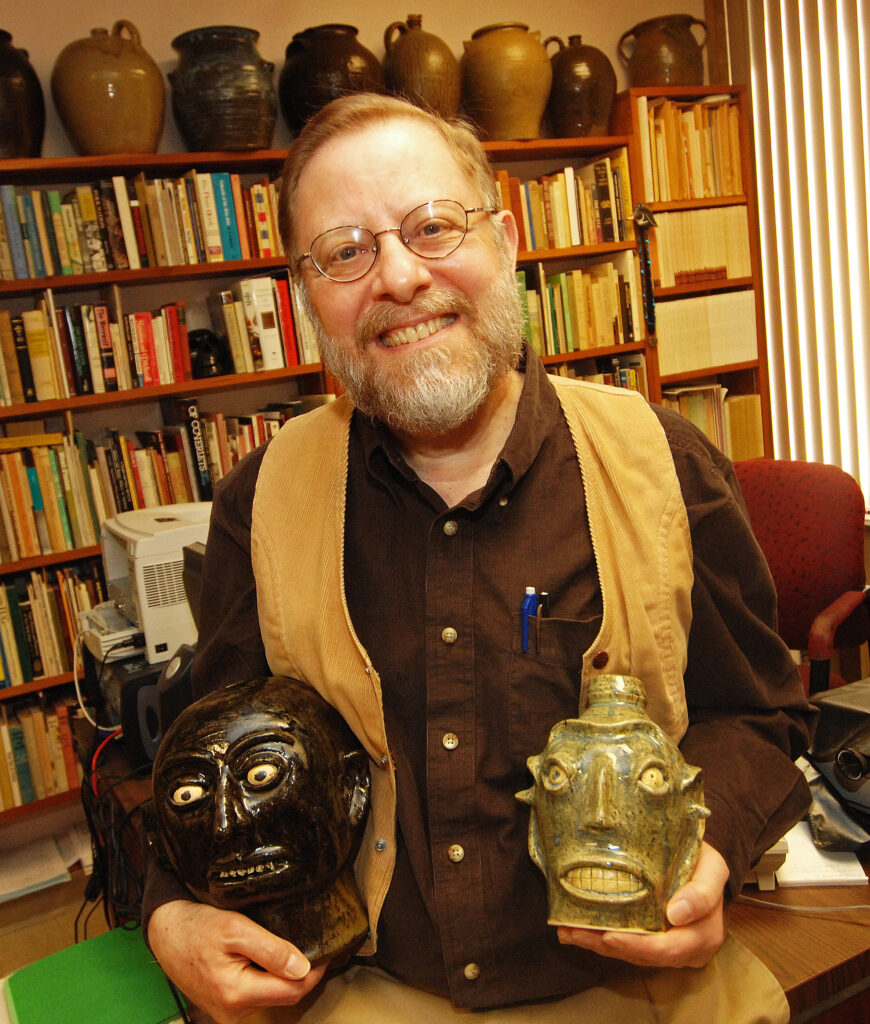
Courtesy of John Burrison. Photograph by Carolyn Richardson
Burrison is credited with helping to keep alive Georgia’s folk pottery tradition by encouraging potters and stimulating collector interest in their work. In recognition of his contributions and commitment to the study of Georgia folk traditions, he received the Governor’s Award in the Humanities in 1987.
Early Life
John Abraham Burrison was born on October 11, 1942, in Philadelphia, Pennsylvania, to Ruth Altman and Maurice Steelman Burrison. His family spent the summers at his grandfather’s cottage in Arden, Delaware, and it was there that Burrison had an early encounter with the folk and blues musician known as Leadbelly. In 1947, during the early period of America’s folk music revival, a “hootenanny,” or folk music gathering, took place in the backyard of the cottage. Leadbelly was one of the participants, and he lulled the young Burrison to sleep with the song “Good Night, Irene.” Later, the experience became more meaningful to Burrison when, as a teenager, he developed an interest in folk and traditional music.
Education and Early Career
Burrison attended Pennsylvania State University, where his study of folklore began with a course on the musical ballad taught by Samuel Bayard, an internationally known folklorist. Burrison soon discovered a range of other folk traditions that captivated his intellectual curiosity, and he began publishing his own journal, Folkways. In 1964 he began graduate school at the University of Pennsylvania’s Department of Folklore and Folklife. Meanwhile, in Atlanta, the English department at Georgia State University was eager to start a folklore program for undergraduates. In 1966 the school hired Burrison to construct a curriculum for what would become the only substantial university folklore program in Georgia. Soon, he and his students were conducting fieldwork to collect and catalog aspects of vernacular cultural traditions across the state. Those files became the basis of the Georgia Folklore Archives, the only intensive statewide effort to document Georgia’s folk traditions, and they now form part of the study archive at the Atlanta History Center.
Burrison was awarded the Ph.D. in 1973 from the University of Pennsylvania. His dissertation, “Georgia Jug Makers,” foreshadows much of his later work and examines the survival of a traditional art form, discussing it as a folk tradition in modern terms.
Connection to Meaders Family
Before he moved to Atlanta, Burrison’s primary interests were oral literature and musical traditions. Then, in early 1968, while collecting information and artifacts for an exhibition of north Georgia folk crafts, Burrison stopped by the Meaders family pottery in White County. Cheever Meaders had recently died, and Burrison wanted to see what had become of the family’s pottery business. There, Burrison met Lanier Meaders, Cheever’s son, and the two began a friendship that would last until Meaders’s death in 1998.
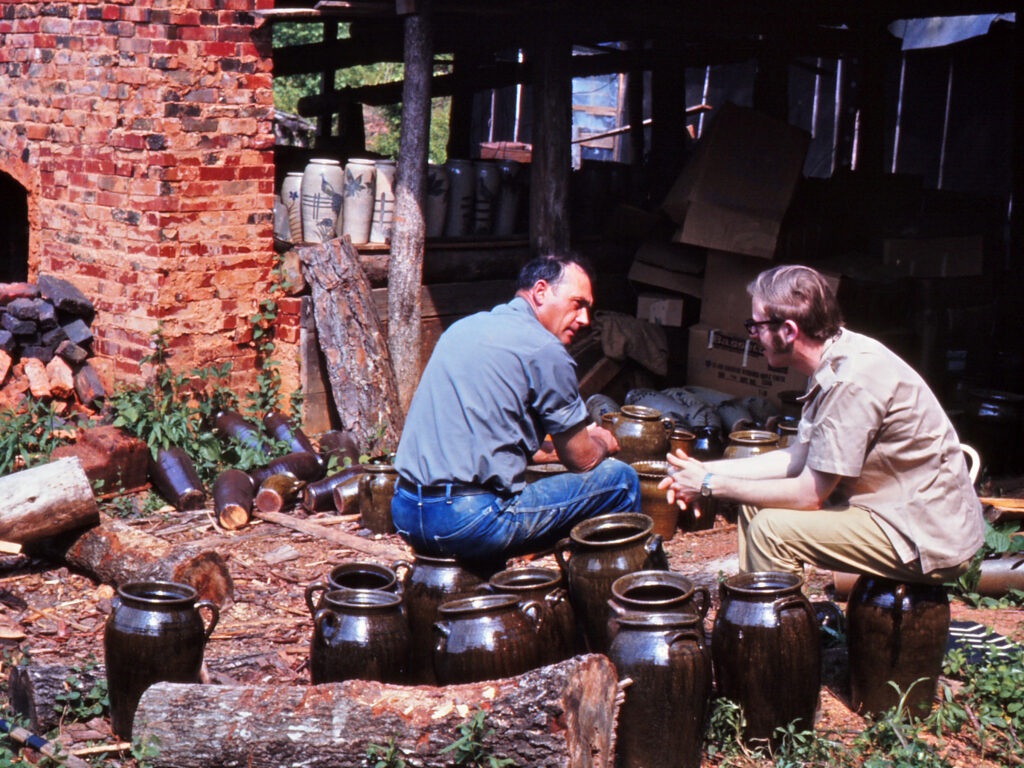
Courtesy of John Burrison. Photograph by Dick Pillsbury
Meaders, in continuing the traditions of his father, was a remarkable representative of an ongoing craft tradition, and his engaging personality led Burrison to examine the continuity represented by this family of potters. Burrison then widened the scope of his study to show the Meaders family’s connections with other regional pottery makers. Such ties offered a compelling way to read the central role of folk craftsmen, and their production, in forming a regional identity.
Research and Public Scholarship
In his work, Burrison takes the traditional material culture study approach (that is, a folklorist’s perspective) and combines it with extensive interviews, oral histories, and exhaustive archival research on both the potters’ families and their locations. These analyses add to his work contextual dimensions that illustrate how networks of artisans and artifacts evolve over time and place. His methodology also includes discussions of pottery-making techniques gleaned from interviews and from critical study. For Burrison, proper study of the artifact includes the historical, political, artistic, and cultural markers that lead to and away from it.
Brothers in Clay, inspired by Lanier Meaders and his work, is indispensable to scholars, collectors, and others with an interest in the folk culture of Georgia and the Southeast. The book was the first comprehensive survey of a southern state’s ceramic traditions, both living and historical, and is still considered definitive for Georgia. It has also been a model for similar studies in other states. In 2010 Burrison published From Mud to Jug: The Folk Potters and Pottery of Northeast Georgia, which updates the story.
Burrison has been a frequent consultant to museums, arts councils, film productions, and the Smithsonian Institution in Washington, D.C. He has lectured at the Library of Congress in Washington; the Ulster Folk and Transport Museum in Northern Ireland; the Johannes Gutenberg University in Mainz, Germany; and Peking University in Beijing, China.


